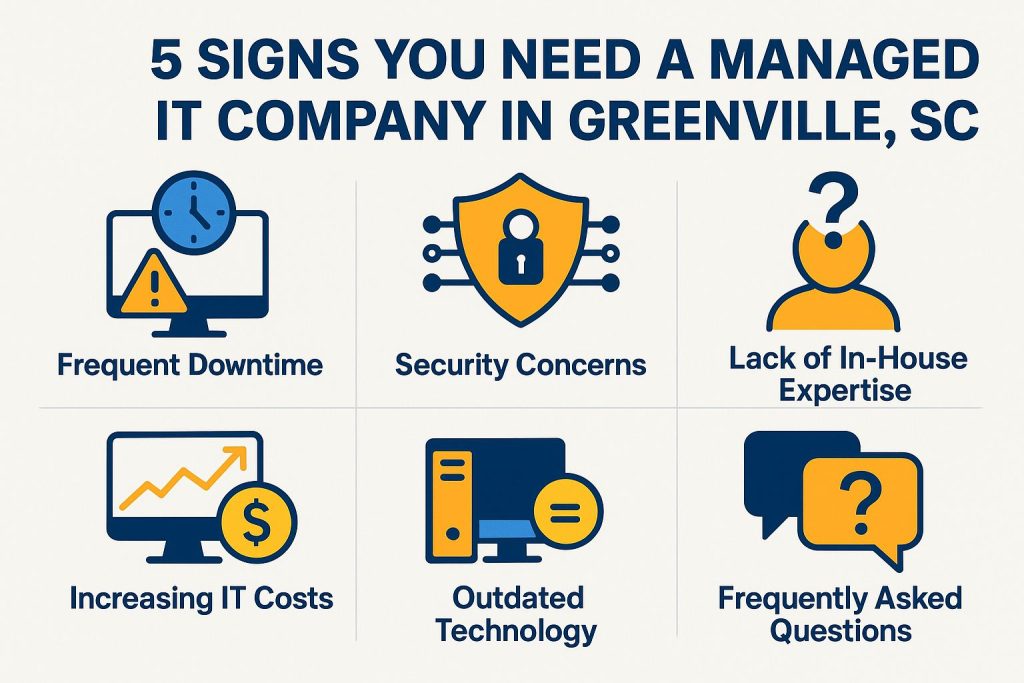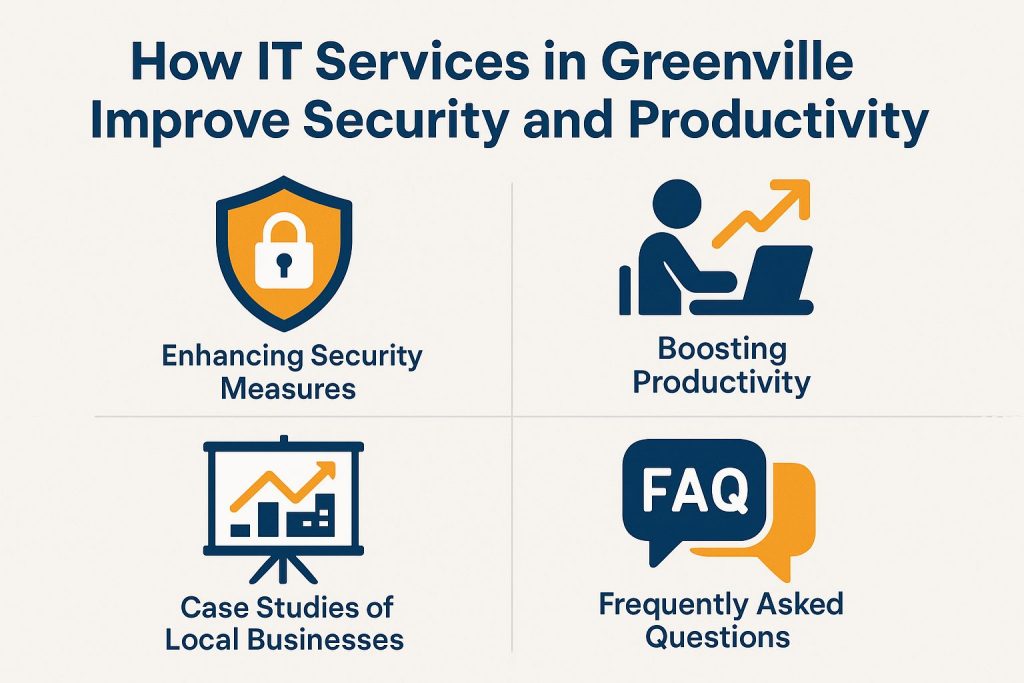How to Build a Strong IT Security Policy for Your Company
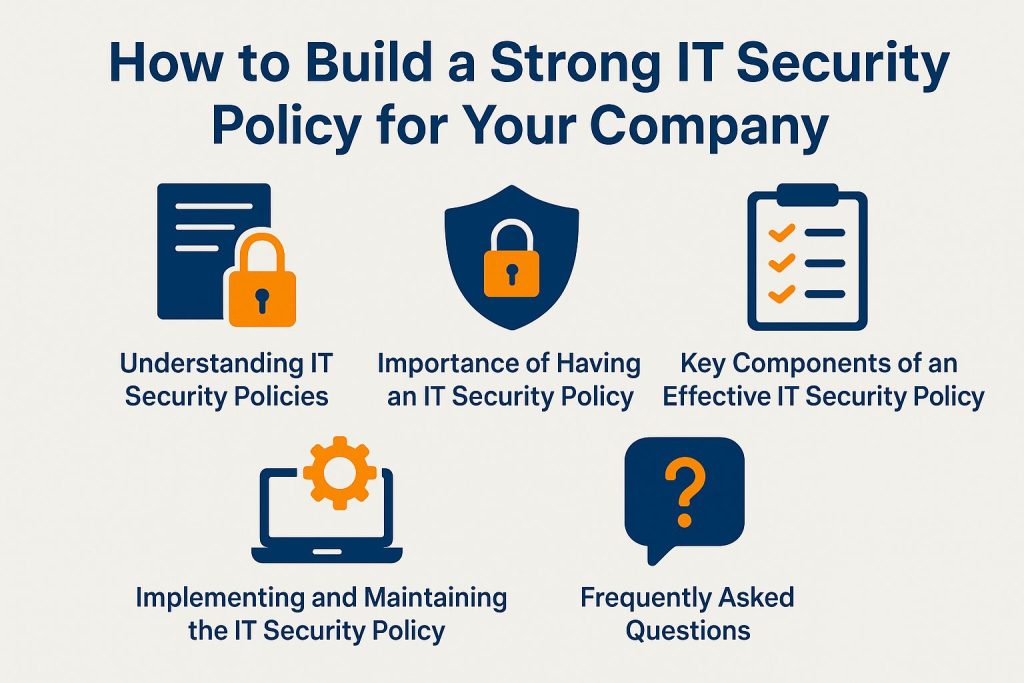
Today, protecting sensitive information is crucial. An effective **IT security policy** is essential for defending against cyber threats. It provides guidelines to protect data and support operations. This article explains what an **IT security policy** is. It also discusses its importance and key components for effectiveness. It also outlines strategies for implementing and maintaining the policy to ensure ongoing protection. Readers can explore essential steps to create a strong IT security framework for their company.
Understanding IT Security Policies
Understanding IT security policies and their integration with a cybersecurity framework is essential for organizations looking to protect their digital assets from evolving cyber threats. An IT security policy delineates the principles and rules for safeguarding sensitive information, ensuring compliance with regulatory requirements, and establishing a security framework that aligns with the organization’s objectives.
By defining clear protocols, these policies assist organizations with risk assessment, incident response planning, employee training, security controls, and the enforcement of security measures. Furthermore, a robust IT security policy promotes a culture of security awareness among employees, enhancing their ability to identify and mitigate potential risks.
In the current digital landscape, implementing effective IT security policies is critical for maintaining cybersecurity resilience.
What is an IT Security Policy?
An IT security policy is a comprehensive document that delineates the necessary security measures and protocols to protect an organization’s information systems from cybersecurity threats, ensure data protection, and manage third-party risk.
This policy serves as a crucial foundation for establishing a framework of compliance and security governance, addressing the specific protections required for sensitive data and critical infrastructure.
Within this policy, various sections detail the organization’s approach to risk assessment, incident response, access control, data classification, employee training, and identity management. By clearly defining roles and responsibilities, the policy establishes accountability, ensuring that all personnel understand their obligations regarding safety practices.
Additionally, it provides guidance for the organization in meeting regulatory requirements and compliance regulations, thereby minimizing legal risks and reinforcing stakeholder trust in the organization’s commitment to safeguarding its digital assets.
Importance of Having an IT Security Policy
The significance of implementing an IT security policy is paramount, as it provides a crucial framework for managing security risks related to cyber threats and ensures compliance with regulatory requirements.
Risks of Not Having an IT Security Policy
The absence of an IT security policy exposes organizations to risks like data breaches and financial losses resulting from security incidents.
Without a well-defined policy, organizations may become significantly more vulnerable to cyber threats, including ransomware attacks and phishing scams, which can compromise sensitive data. Furthermore, the lack of such a policy can result in compliance violations, leaving organizations susceptible to legal repercussions and damaging their reputation.
Organizations must develop an incident response plan. This plan should outline steps to take during a security breach for a quick response.
Additionally, implementing security metrics enables organizations to monitor their data protection efforts and enhance their overall security posture, thereby fostering a culture of awareness and preparedness against potential incidents.
Key Components of an Effective IT Security Policy
An effective IT security policy includes key components that form a comprehensive security framework, such as encryption and network security measures. This framework provides strong protection against cyber threats and encourages a proactive security culture.
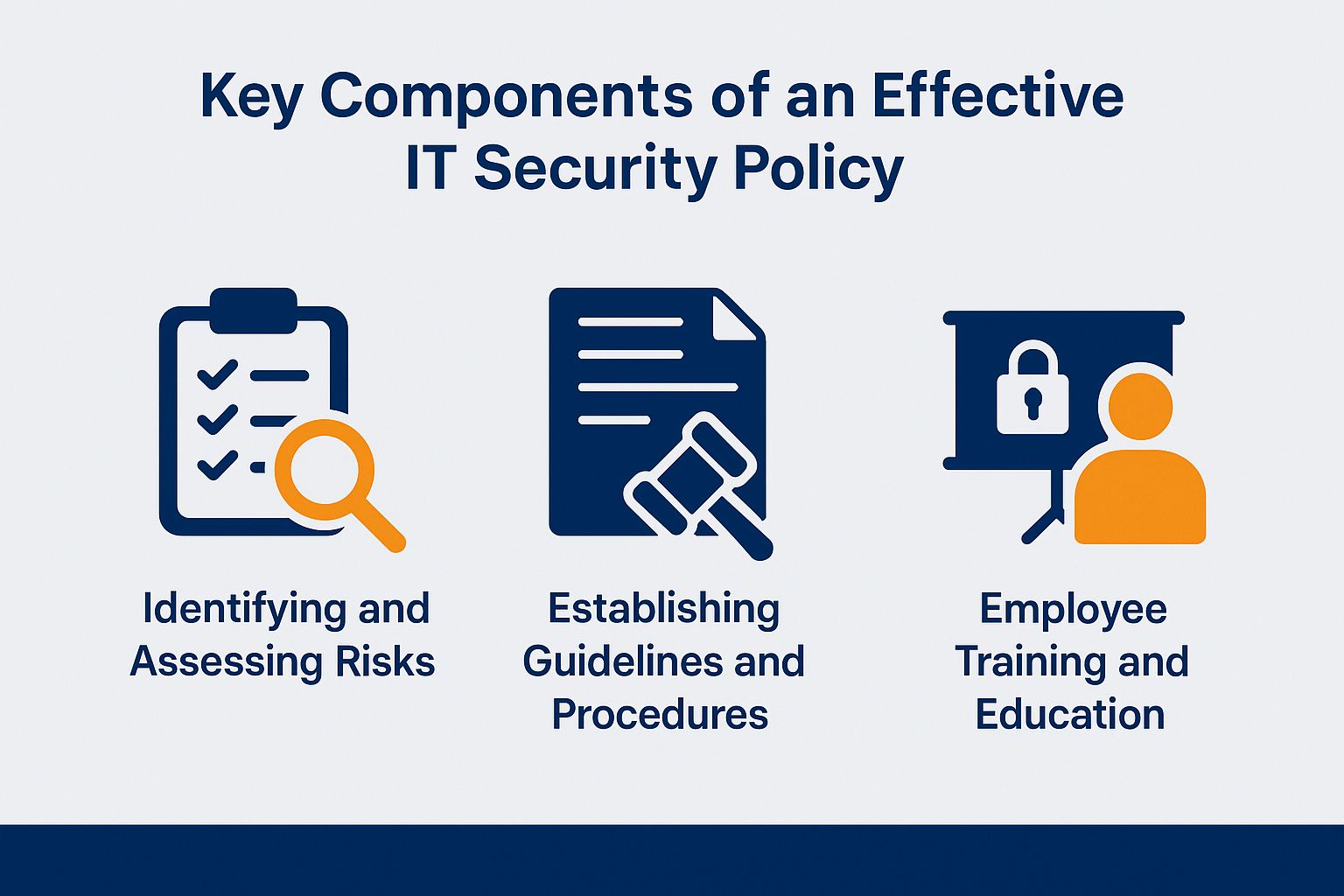
Identifying and Assessing Risks
Identifying and assessing risks is key to developing an IT security policy. It involves evaluating potential vulnerabilities, threat modeling, and implementing security controls to protect valuable assets.
The risk assessment process starts with an inventory of assets. Next, identify potential vulnerabilities related to those assets.
Organizations can use threat intelligence to understand current and emerging threats that may affect their systems.
After analyzing risks, organizations can implement targeted security controls. These include firewalls, intrusion detection systems, and regular patch management to mitigate identified threats.
By integrating these practices into their vulnerability management efforts, businesses can enhance their overall security posture, ensuring proactive responses to the ever-evolving landscape of threats.
Establishing Guidelines and Procedures
Establishing clear guidelines and procedures is essential for the effective enforcement of an IT security policy, ensuring that all employees understand their roles in maintaining security and compliance.
These frameworks enhance accountability and lay the foundation for strong risk management practices. These guidelines detail expectations, responsibilities, and actions for various scenarios. This helps staff navigate complex security landscapes.
When employees are well-informed about data protection protocols, incident response plans, and access control measures, they become proactive participants in safeguarding sensitive information. Regular training sessions and updates enhance awareness and adapt to evolving threats. This fosters a security culture that emphasizes compliance and risk mitigation.
Employee Training and Education
Employee training and education are essential for a strong IT security policy. They equip staff with the knowledge and skills to identify and respond to cybersecurity threats.
Today, cyber threats are rapidly evolving. Cultivating a strong security culture within organizations is critical. Comprehensive security awareness training helps employees make informed decisions about data protection and incident reporting.
Various methods can engage learners. These include interactive workshops, online training modules, and simulated phishing attacks.
Integrating these training initiatives into the IT security policy emphasizes vigilance. It fosters continuous learning and a proactive environment that prioritizes cybersecurity.
Implementing and Maintaining the IT Security Policy
Implementing and maintaining an IT security policy is a continuous process. It requires effective communication, ongoing training, and regular updates to adapt to evolving cybersecurity challenges, as mentioned in our guide to cybersecurity best practices for businesses.
Organizations must prioritize these elements to ensure robust security measures are in place and to mitigate potential risks effectively.
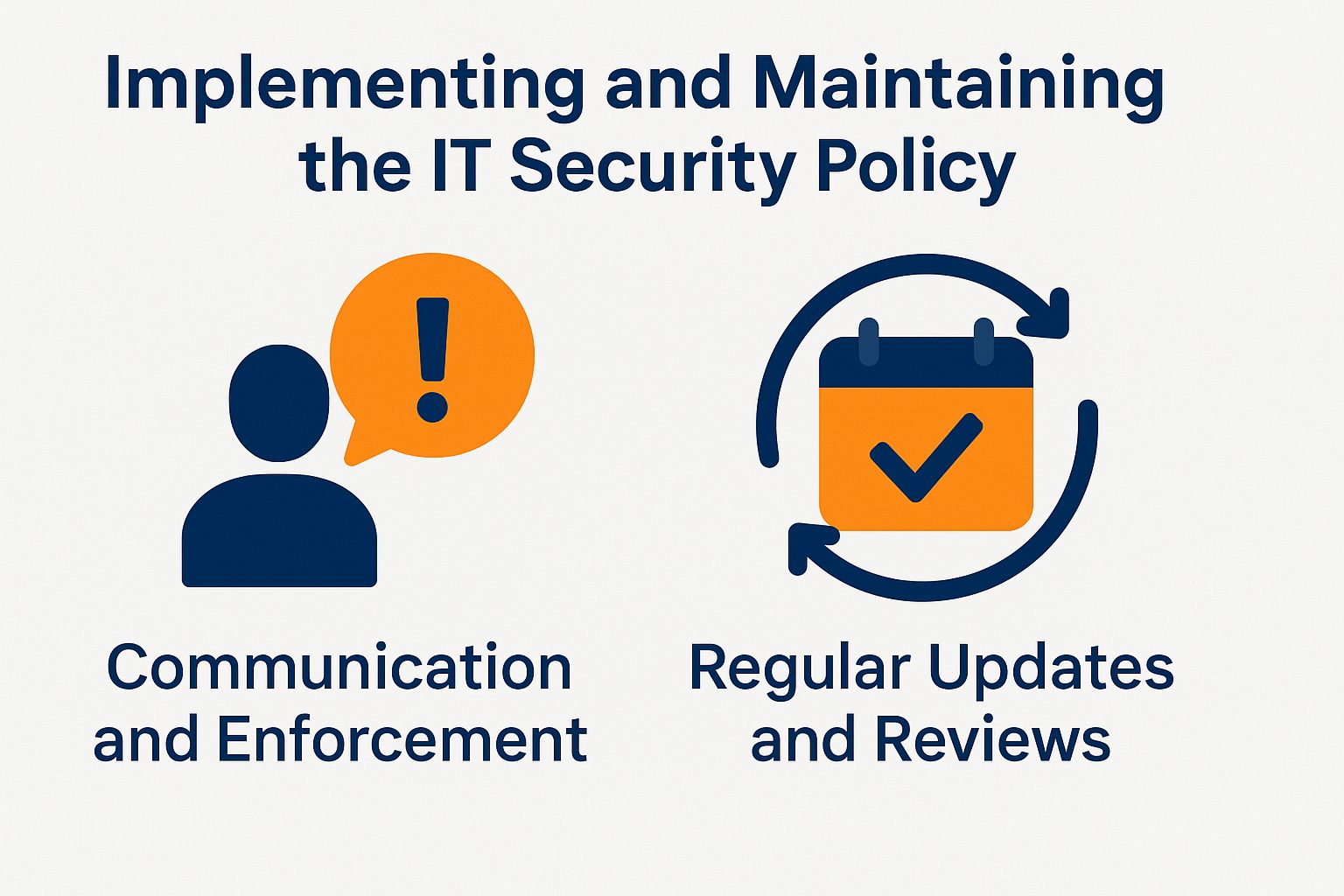
Communication and Enforcement
Effective communication and enforcement, along with security documentation, are essential for ensuring that all employees comprehend the IT security policy and adhere to its requirements, thus fostering a robust security culture within the organization.
Organizations can use strategies like regular training sessions and interactive workshops. These engage employees in discussions about cybersecurity threats and best practices.
- Make the policy documentation clear and easy to access.
- Use newsletters or internal channels to communicate regularly about the policy.
The establishment of feedback mechanisms helps employees express concerns and ask questions. This promotes ownership of security practices.
In terms of compliance enforcement, integrate policy adherence into performance evaluations and use incident management systems to report violations. This helps all employees understand their responsibilities and the consequences of non-compliance.
Regular Updates and Reviews
Regularly update and review the IT security policy. This keeps it relevant and effective against new cyber threats and compliance needs.
In a changing digital world, threats can arise unexpectedly. These practices help organizations find vulnerabilities and follow legal standards.
Security audits and vulnerability assessments help businesses evaluate their defenses, find weaknesses, and make necessary improvements.
This proactive approach helps organizations prevent breaches.
Following industry regulations protects sensitive data and improves the organization’s reputation. This builds trust and reliability in information security governance.
Frequently Asked Questions
What is an IT security policy and why is it important for my company in terms of cybersecurity strategies?
An IT security policy is a set of rules for handling and protecting sensitive company information. It includes security procedures. It is important for your company because it helps prevent security breaches and protects confidential data from various cybersecurity challenges and cyber threats.
How do I start building an IT security policy for my company, including a business continuity plan?
To build a strong IT security policy, first identify risks and vulnerabilities in your company’s IT infrastructure with assessment tools. Then, determine what measures, such as encryption standards and firewall configuration, need to be in place to prevent these risks and protect sensitive information. You may also consult with IT governance and security architecture experts for guidance.
What should be included in an IT security policy to enhance mobile device management?
An IT security policy should include guidelines for password management, data encryption, employee access to sensitive information, remote access, incident response, and application security. It should also outline consequences for violating the policy, ensuring access control lists are maintained.
How often should an IT security policy be reviewed and updated in light of new cybersecurity tools?
Review and update the IT security policy at least once a year or whenever there are major changes in your company’s IT infrastructure, considering security assessments and audit trails. It is important to regularly review and update the policy to ensure that it is effective against new and evolving cyber threats, incorporating continuous improvement practices.
How can I ensure that my employees follow the IT security policy and adhere to privileged access management?
To ensure employees follow the IT security policy, provide regular training on cybersecurity best practices like phishing prevention and security protocols. Additionally, enforce consequences for violating the policy and regularly monitor employee compliance through audits, security assessments, and monitoring and logging activities.
What should I do if my company experiences a security breach despite having an IT security policy in place and a data breach response plan?
If there is a security breach, follow the incident response protocols in your IT security policy. This may include containing and mitigating the breach, notifying appropriate parties, conducting a post-incident analysis to prevent future breaches, and enhancing cloud security measures.

